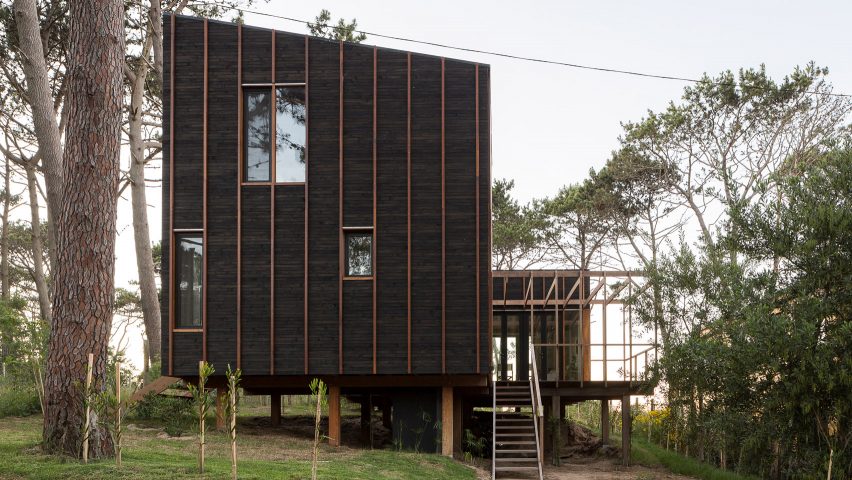
Wood stripes detail black house in rural Uruguay by FRAM Arquitectos and Delfina Riverti
A glass walkway and terrace connect both halves of this black house near La Juanita beach, Uruguay, which FRAM Arquitectos and Delfina Riverti built almost exclusively out of wood.
The property is built on a slope near Jose Ignacio Lake, a coastal body of water that feeds into the Atlantic Ocean. It was completed by FRAM Arquitectos, a studio located in nearby city Buenos Aires, and architect Riverti.
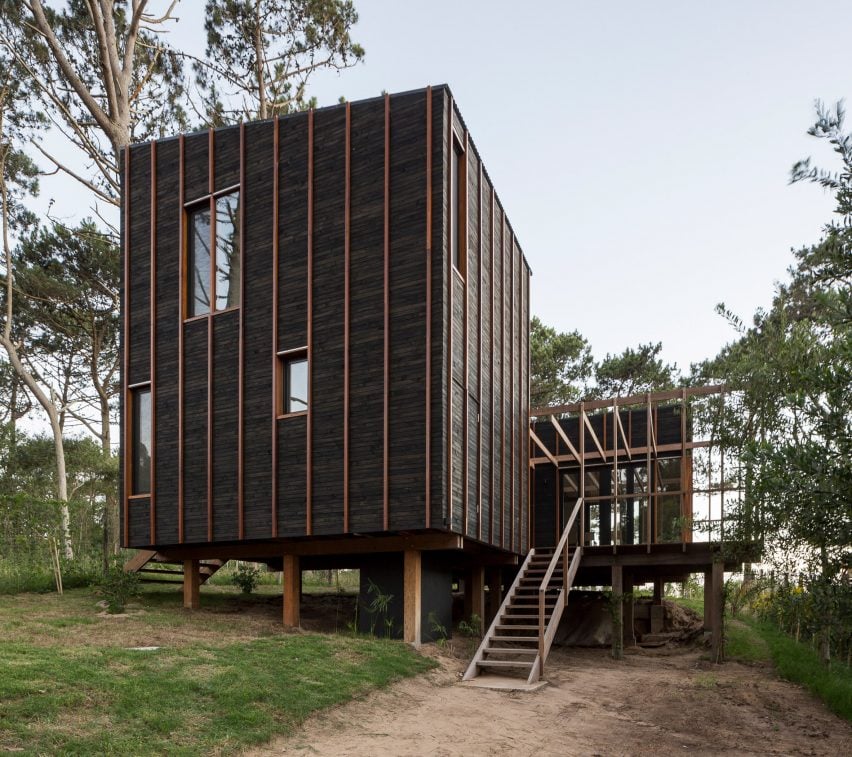
Two wooden volumes with angled rooflines comprise the home's massing. Different varieties and treatments to the material were used for the structure, walls, cladding, and interior finishes.
Dark horizontal planks wrap the home, and are held in place with slightly paler vertical elements that align with the building's structure.
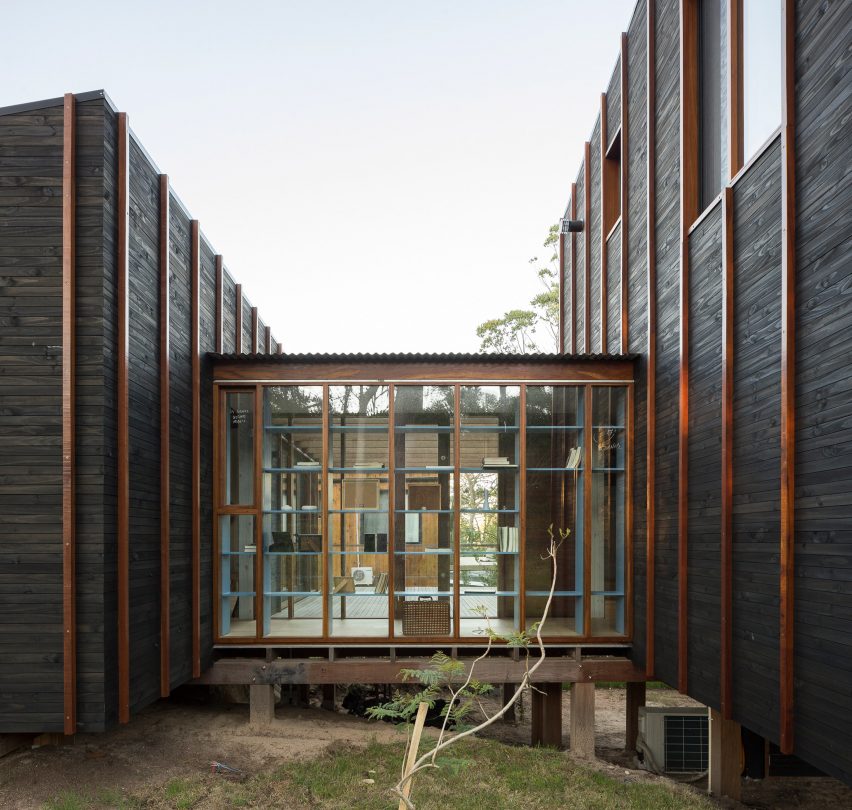
"In this way, the external language embodies the direct expression of the constructive and material modulation," said FRAM Arquitectos in a project description.
The team paired pale pine, a soft and inexpensive wood, with Massaranduba, a species native to South America.

The pine planks are oil-stained to a dark tone, which contrasts the natural colour of the tropical wood. The Massaranduba strips were also treated with oil, but left in their natural shade.
"No treatment was used, so that these parts age with time and turn gray, differentiating them from the two black volumes," architect Franco Riccheri from FRAM Arquitectos told Dezeen.
Pine was also used for the interior finishes, where the material was whitewashed to protect it and brighten the resident's living spaces.
Images of the project show crisp and minimal living spaces, with a few splashes of colour brought in by the occupant's furniture and belongings.
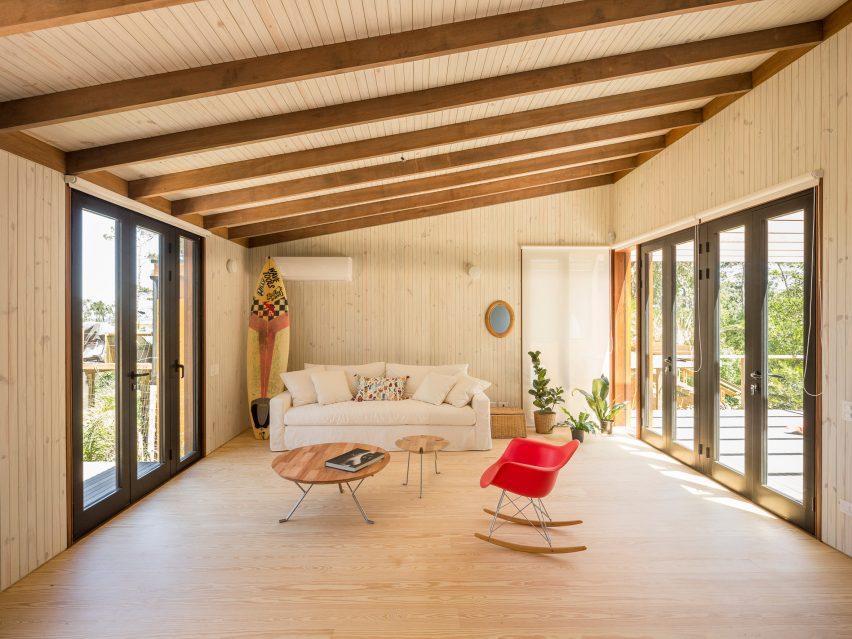
Visitors access the home from the north, where the property leads to the street. This leaves the southern portion of the site open to views of the ocean below.
According to the architects, this is a common organisational scheme for Uruguay's southern coast.
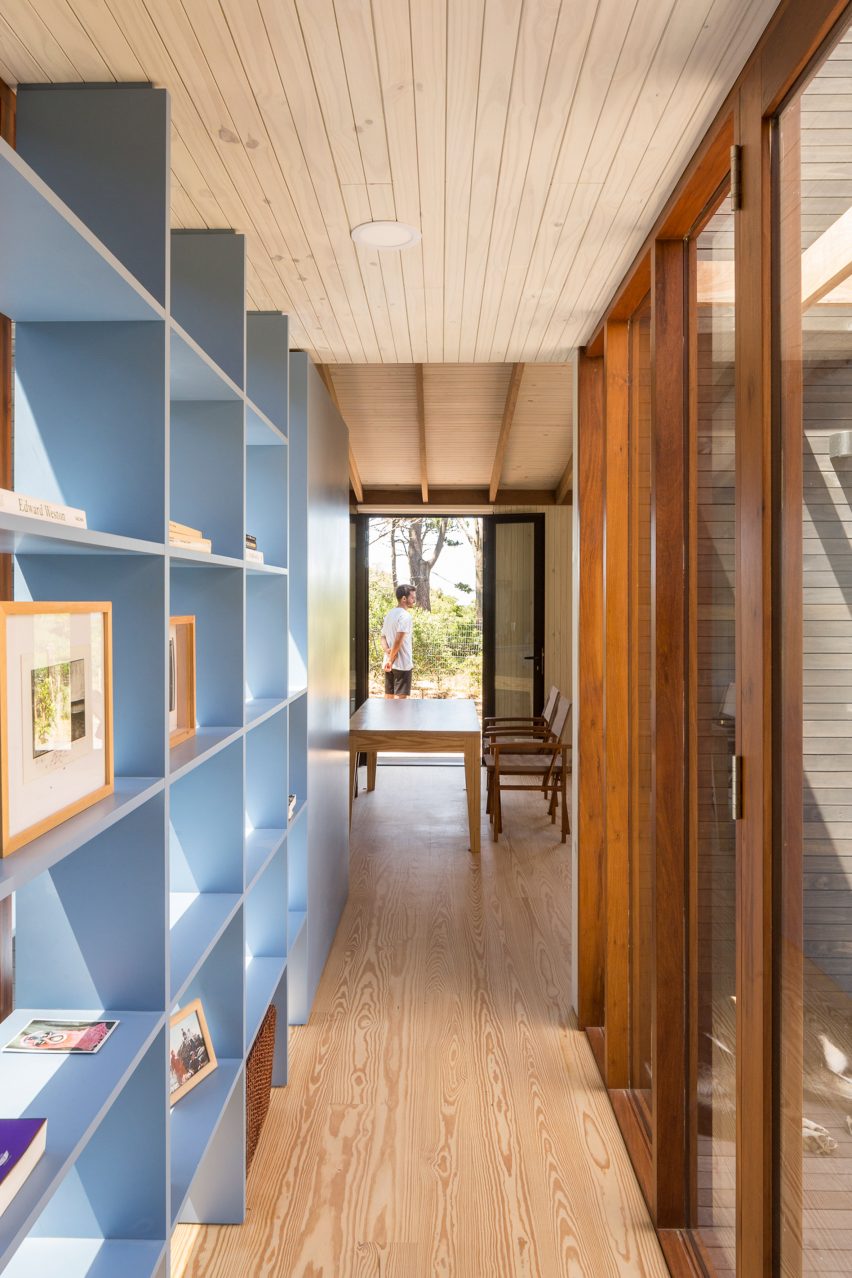
On the ground floor, the kitchen, living, and dining room are located in a one-storey volume that is oriented to face the water.
A glass terrace and walkway separate this from the other half of the home, which has a second floor and contains the two bedrooms.
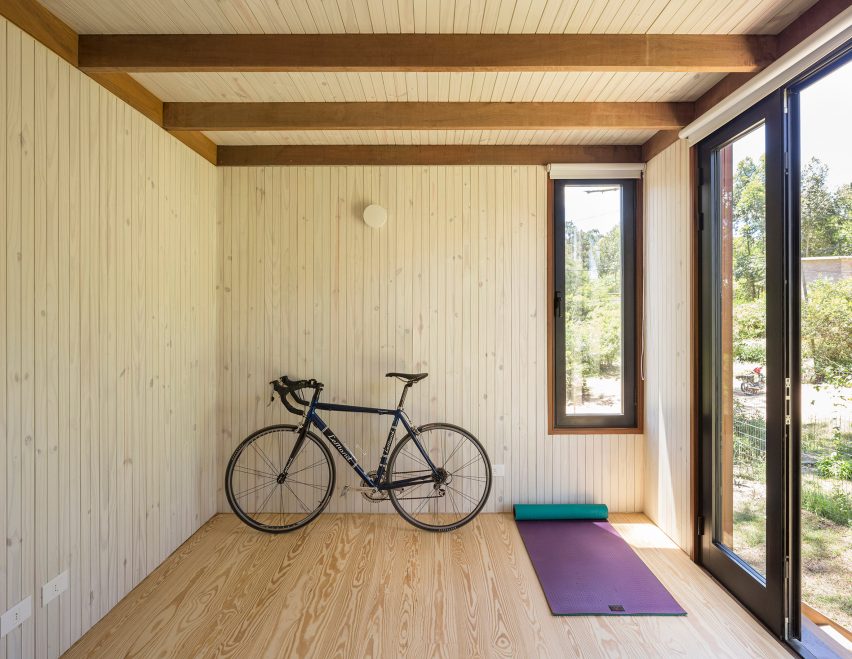
"This disposition intersects with the operation planned for the house: a lower level to receive family members, holding the house common areas, and an upper floor exclusively for the owners," said the architects.
A pastel-blue bookshelf runs along the walkway between each half of the home. Its open shelves allow light to filter through, keeping this corridor airy and bright. Matching cabinets provide storage in the open-plan kitchen.
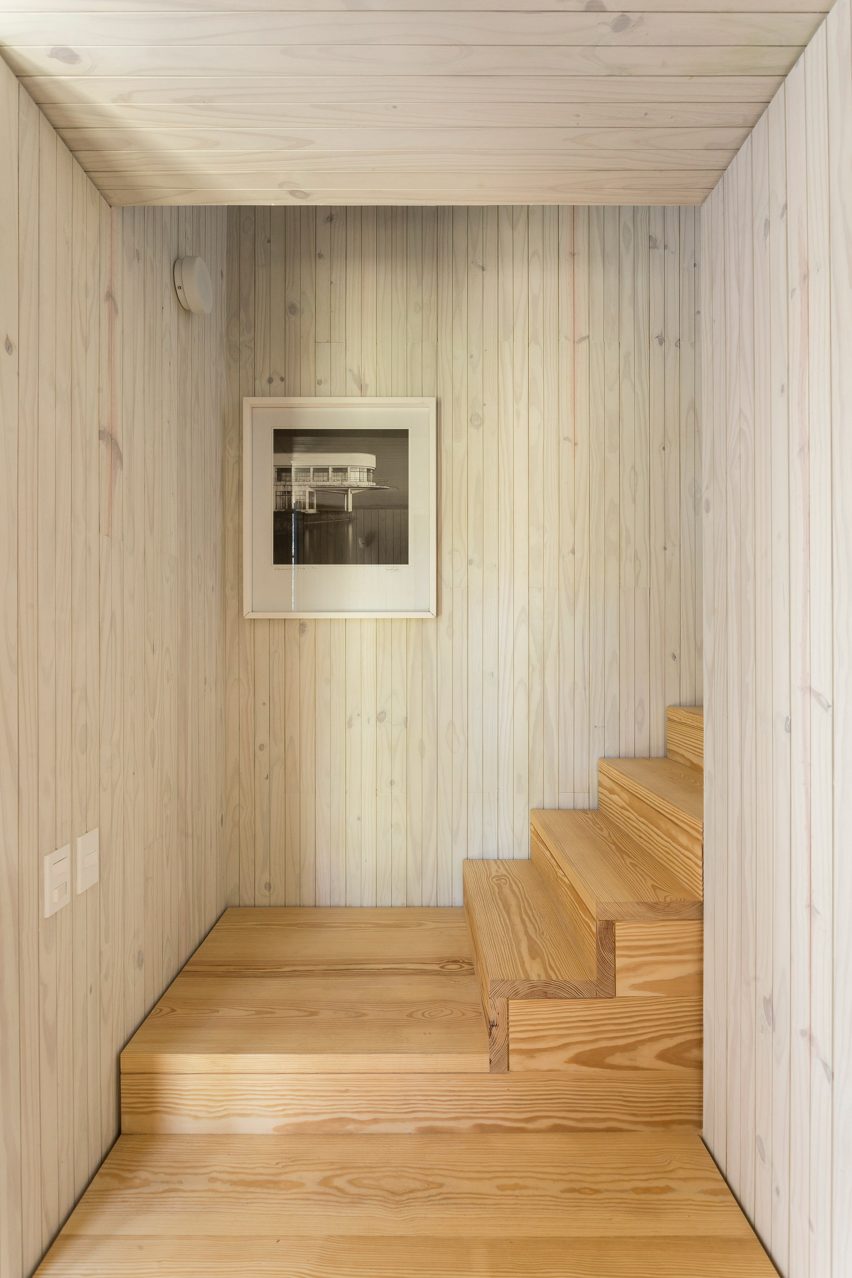
The intermediate space between each half of the home also enjoys access to a semi-enclosed terrace, which is covered by a wooden lattice overhead. "The exterior terrace and structural parts are Massaranduba wood," architect Franco Riccheri from FRAM Arquitectos told Dezeen.
Other projects in the South American country include a bakery built within a historic structure in Montevideo, and a glass-fronted prefabricated home overlooking a vineyard, by MAPA Arquitectos.
Photography is by Fernando Schapochnik.